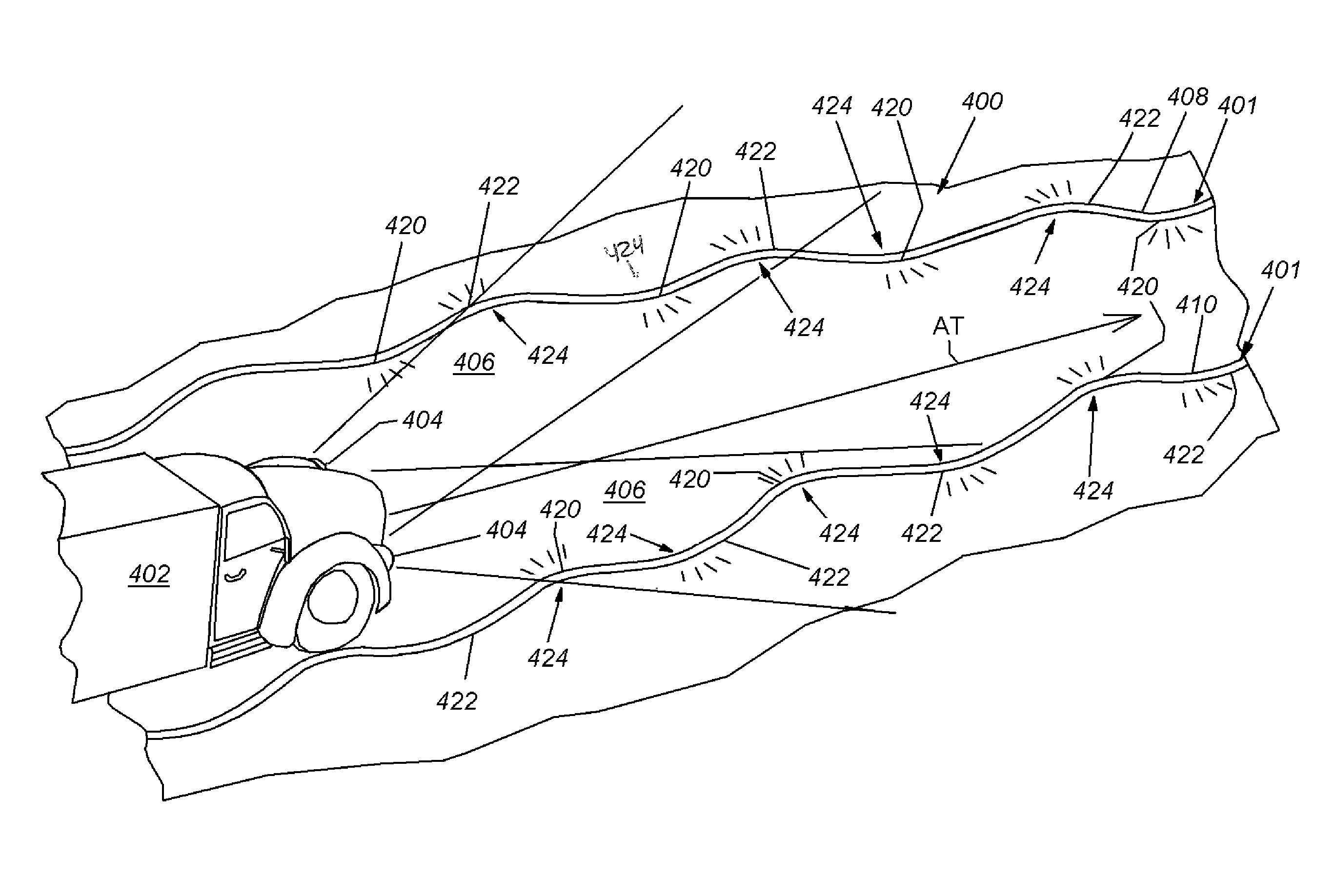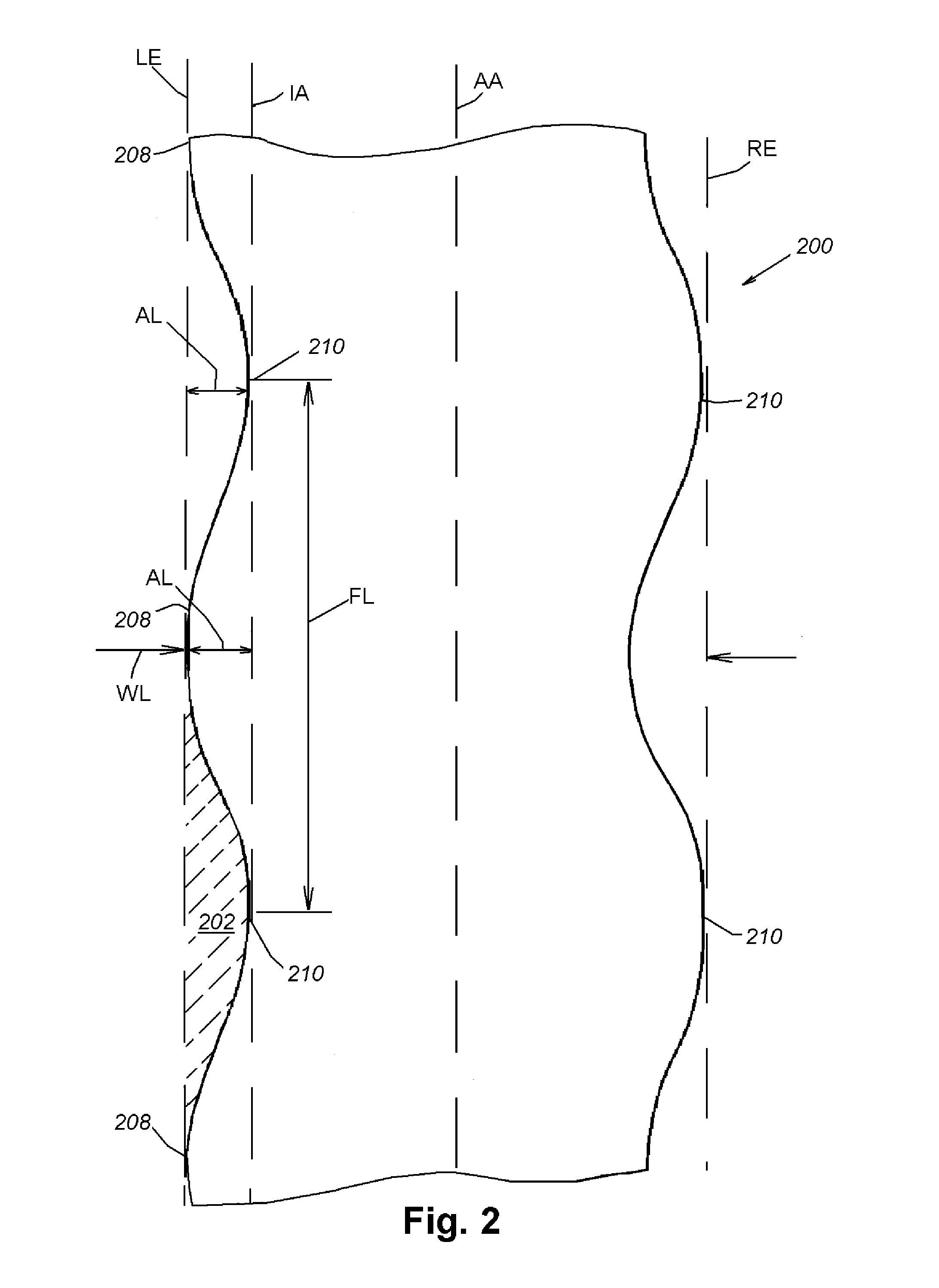Sinuous traffic line
- Summary
- Abstract
- Description
- Claims
- Application Information
AI Technical Summary
Benefits of technology
Problems solved by technology
Method used
Image
Examples
Embodiment Construction
[0016]A portion of an illustrative sinusoidal traffic line 200 is shown in FIG. 2 and is defined as resembling a sine wave in shape. The sinusoidal lines are formed by “scalloping” the edges, that is to say, by omitting material by removal or non-application. LE is the axis of the left side edge of a traffic line and RE is the axis of the right side edge of a traffic line, relative to the center axis AA of the traffic line. The scalloping can be created by omitting material from the lines during their application, so that there are areas 202 of omitted material. The scalloping pattern is regular and is constructed and arranged as a sine wave relative to the vector AA of the line. In an embodiment, a pattern of the wavy left edge corresponds to and is identical to a pattern of the wavy right edge and is in phase. The inner limit axis IA of the sine-wave shaped outer edge line is proportionate and congruent to the outer left side edge LE. The shape of the outer line is comprised of “c...
PUM
 Login to View More
Login to View More Abstract
Description
Claims
Application Information
 Login to View More
Login to View More - R&D
- Intellectual Property
- Life Sciences
- Materials
- Tech Scout
- Unparalleled Data Quality
- Higher Quality Content
- 60% Fewer Hallucinations
Browse by: Latest US Patents, China's latest patents, Technical Efficacy Thesaurus, Application Domain, Technology Topic, Popular Technical Reports.
© 2025 PatSnap. All rights reserved.Legal|Privacy policy|Modern Slavery Act Transparency Statement|Sitemap|About US| Contact US: help@patsnap.com



